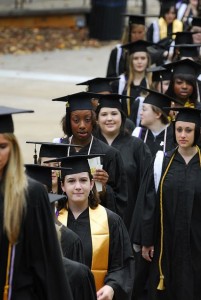Latinos Double Reliance on Student Loans
 Among all races and ethnicities, the percentage of undergraduates with private loans—used at all types of schools from community colleges to private universities and for-profit institutions—jumped nine points, for a total of nearly 3 million borrowers and a loan volume of $17.1 billion at the end of the 2007-08 school year. Latino undergrads—who along with Asian and other immigrant families have traditionally shied away from borrowing because of cultural attitudes about carrying debt—more than doubled their reliance on private loans during the same time period.
Among all races and ethnicities, the percentage of undergraduates with private loans—used at all types of schools from community colleges to private universities and for-profit institutions—jumped nine points, for a total of nearly 3 million borrowers and a loan volume of $17.1 billion at the end of the 2007-08 school year. Latino undergrads—who along with Asian and other immigrant families have traditionally shied away from borrowing because of cultural attitudes about carrying debt—more than doubled their reliance on private loans during the same time period.
###
Via GazetteXtra
WASHINGTON — If you’re not intimately familiar with the terrifying phrase “February is FAFSA time,” then you don’t have college-age kids. Or you’re wealthy enough to be unencumbered by the gut-wrenching process of filling out the dreaded Free Application for Federal Student Aid, the gateway to federal and state student grants, work-study and loans for college.
Though students can file the FAFSA for the upcoming fall semester until June 30, February is crunch time. College-access organizations across the country are exerting their most strenuous efforts right now to encourage middle- and low-income families, just now receiving W2 and other forms in the mail, to file their income tax returns and immediately fill out the FAFSA form for priority consideration.
It is a tremendously difficult endeavor. Fear of confronting family finances head-on keeps many people from dealing with their tax matters until the very last minute. And intense anxiety about whether a family will qualify for the necessary aid to pay for that first—or next, or last—year of college just causes some people to shut down altogether. More and more are simply taking a dangerous pass on federal loans.
Instead, the percentage of African-American undergraduates who took out private loans to pay for college quadrupled between the 2003-04 and 2007-08 academic school years, according to “Critical Choices: How Colleges Can Help Students and Families Make Better Decisions about Private Loans.”
This report, released last summer by the Project on Student Debt at the Institute for College Access & Success, outlined how college financial aid offices can play a significant role in reducing their students’ reliance on private loans—through proactive counseling to inform students of the differences between federal and alternative, more risky, private loans.
Latino undergrads—who along with Asian and other immigrant families have traditionally shied away from borrowing because of cultural attitudes about carrying debt—more than doubled their reliance on private loans during the same time period.
Among all races and ethnicities, the percentage of undergraduates with private loans—used at all types of schools from community colleges to private universities and for-profit institutions—jumped nine points, for a total of nearly 3 million borrowers and a loan volume of $17.1 billion at the end of the 2007-08 school year.
This is a huge deal.
Compared to federal loans, private student loans are one of the riskiest ways to pay for college, tantamount to using a credit card. With uncapped, variable interest rates and origination fees, they usually end up costing the neediest students—and their co-signing families—the most. In 2010, the Student Lending Analytics blog estimated that, based on loans made in the 2004-07 period, 360,000 to 540,000 borrowers will end up defaulting on a total of more than $5 billion in subprime private student loans that can’t be discharged through bankruptcy.
Federal loans, with their fixed, lower interest rates, no pre-payment penalties and built-in mechanisms for avoiding default by taking employment status into account, are better in myriad ways. Yet students are increasingly turning to private rather than federal loans and grants. Though it seems counterintuitive, private loans promoted with a “three-minute application” and teaser rate can seem an appealing alternative to an overwhelmed or intimidated family that fears filling out the FAFSA and taking a chance with the government.
Unlike college-savvy, upper-middle-income families, those with lower incomes are the least likely to have ever heard about need-based federal or state aid programs. According to a 2010 survey by the College Board Advocacy & Policy Center, there was less awareness of the federal Pell Grant program—funds that don’t need to be repaid—among lower-income, Latino, and less-educated parents than among other groups. Only 44 percent of Hispanics were aware of Pell Grants, compared to 81 percent of Caucasians and 82 percent of African-Americans.
Parents of all races and ethnicities, across income and educational attainment levels, feel the federal financial aid system is too complicated. For many families, the application process is too reliant on a computer and Internet connection. And immigrant families face language barriers and the fear of providing information to the government, regardless of legal status.
In a perfect world, President Obama’s latest attempts to make college affordable would begin with tackling this perfect storm that leads vulnerable parents and students to make disastrous college-financing choices. Until then, parents should know that filling out the FAFSA may be painful but the alternatives are by far too costly.
Esther Cepeda is a columnist for the Washington Post Writers Group. Her email address is [email protected].












Showing 1 reaction
Sign in with